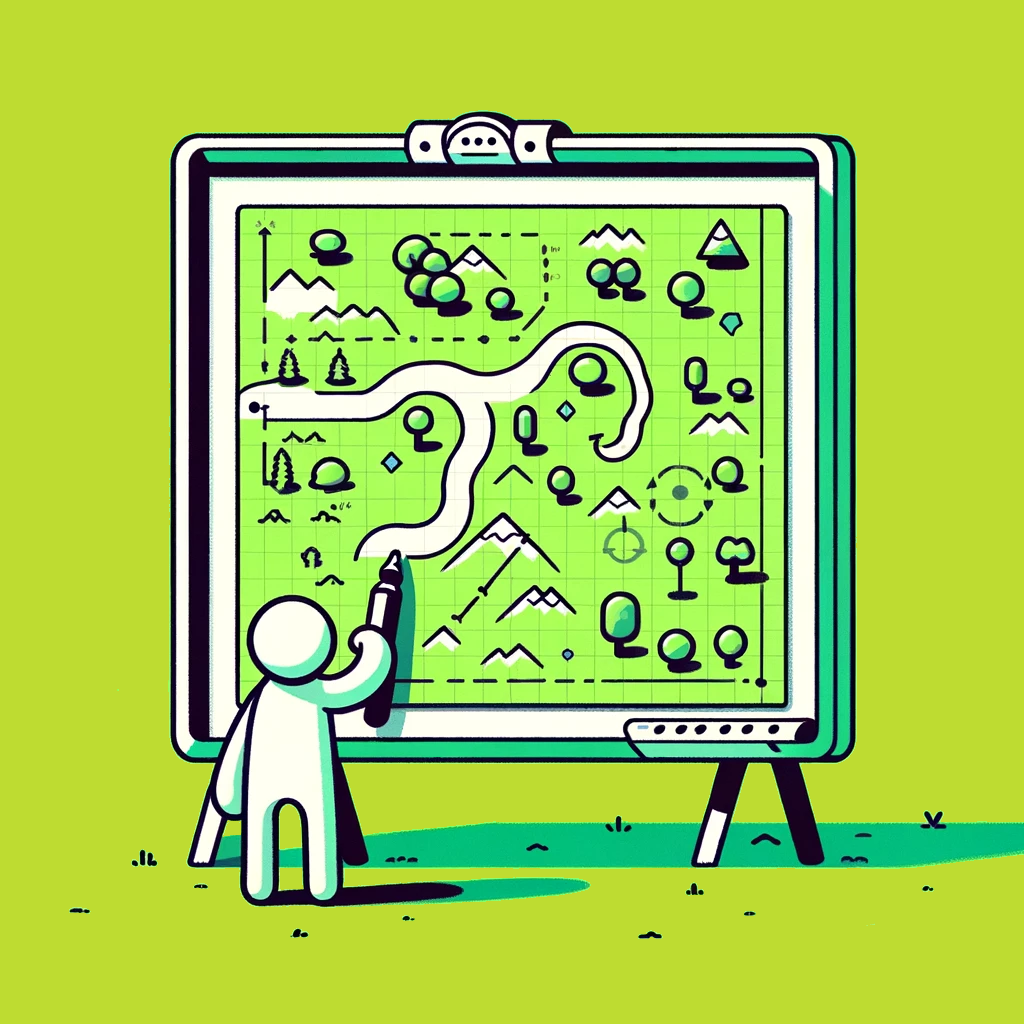In the vast domain of video games, the terrain on which a narrative unfolds is much more than just a backdrop. It is a canvas that must be masterfully designed to intertwine seamlessly with the game mechanics. A well-crafted game mechanic-map combination offers a visually spectacular arena and is a silent storyteller that guides player engagement. This blog post dissects the art of designing maps that accentuate and amplify the core mechanics of a digital game. From understanding core mechanics to applying practical level design principles, this guide is tailored for game developers keen on enriching their game worlds.
Understanding Core Mechanics and Their Interaction with Maps
Before a single line is drawn on the digital canvas, a critical step lies in understanding the game’s core mechanics. Whether it’s about jumping across platforms, solving puzzles, or engaging in tactical combat, the map must be a playground that amplifies these central elements.
Analyzing the Fundamentals
The first step for a developer is to deconstruct the core mechanics. What makes them tick? What are their limitations and potentialities? By discerning what makes these mechanics fun or challenging, developers can identify the spatial requirements these mechanics demand.
Aligning Movement and Space
A map can build pathways that encourage movement in ways that enhance the mechanics. Paths that require precise timing and skillful navigation are essential for a game built on agility. In strategy games, the environment should offer tactical covers and facilitate ambushes. This alignment of movement with space directly impacts player experience.
Crafting Maps to Enhance Gameplay
With a thorough understanding of the core mechanics, the next phase is to design maps that transform these abstract ideas into playable realities.
Balancing Exploration and Guidance
Players delight in exploration, but they can become lost or bored without adequate guidance. A balanced map has a logical flow that both directs and rewards exploration. Secret areas or shortcuts can be strategically placed to encourage players to deviate from the intended path without getting lost.
Establishing a Progression Curve
As players advance, the map should reflect a progression in difficulty or complexity. This gradual curve ensures that the environment mirrors the learning curve of the game mechanics. Simple concepts at the start should translate into more intricate interactions as the levels progress.
The Art of Pacing
Pacing is an often-overlooked element in map design. A well-paced map has sections that vary in intensity, from calm puzzle-solving spaces to fast-paced action zones. This variety maintains player interest and emotional engagement with the game.
Leveraging Environmental Storytelling
Although your players may continue to read the lore of your world, the map can tell a story that enriches their experience. Environmental storytelling crafts a narrative through the map’s architecture, lighting, and terrain.
Creating Contextual Environments
Each area of the map should serve a purpose within the game’s universe. Whether a bustling city center or a desolate wasteland, giving each space a distinct visual identity provides context to the player’s actions.
Directing Focus with Visual Cues
Compelling visual storytelling uses cues to draw the player’s focus towards key areas. Lighting can underscore a pathway, while a sudden change in the environment can signify a story beat or impending challenge.
Navigational Aids and UI Design
In modern games, maps come with many tools to enhance player experience, from in-game HUDs to minimaps. However, proper implementation is crucial, as too much can overwhelm and distract.
Integrating Tools Seamlessly
A minimap can aid in navigation, but does it complement the game’s style? Integrating tools into the narrative can be just as important as their functionality. For example, a magical compass may fit within a fantasy setting, while a radar may be more suitable for sci-fi.
Customizing User Experience
Not every player’s preference is the same. Customizable UIs allow players to adjust their navigational tools based on their comfort. This approach empowers players without imposing a specific play style, fostering a stronger connection between the player and the game.
Implementing Feedback Loops
Maps should be a stage for mechanics and a part of the feedback loop. This means the map should react to player action and provide continuous cues on their performance.
Synchronous Design
Synchronous design ensures that every element of the map, from sound to terrain, is in harmony with player actions. For example, a door that clanks shut after a player passes through it not only offers satisfying feedback but also reinforces a sense of progress.
Dynamic Map Elements
Dynamic map elements can heighten the game’s mechanics. A lever that changes the map la
yout can affect mob movement or open new battle opportunities, adding layer upon layer to the core gameplay loop.
Playtesting and Iteration
The most critical step in map design is the one with the players themselves. Maps can be refined to perfection through playtesting and iteration.
Gathering Diverse Feedback
A diverse pool of playtesters can offer varied perspectives. Game developers should seek feedback from hardcore gamers, casual players, and even non-gamers to capture a comprehensive review of the map design.
Iterating Based on Data
Collecting playtest data is just the beginning; interpreting it and iteratively updating the map is the key. If a specific area consistently frustrates players, it’s a sign that the map design – either in difficulty or guidance – needs rethinking.
Conclusion
Fusing game mechanics with map design is a complex and profoundly creative process that stands at the heart of any memorable gaming experience. A well-considered map can transform a simple gameplay element into a rich, immersive system. By understanding core mechanics, crafting maps that enhance gameplay, and leveraging environmental storytelling, game developers can create worlds that look visually stunning and actively contribute to the player’s experience. With attention to guiding and pacing, the strategic use of UI, and a commitment to iteration, maps can be the bedrock on which a game’s success is built. Whether you’re designing sprawling open-world landscapes or intricate level designs, remember that each map should serve as both a challenge to the player and a testament to your craft as a game developer.


